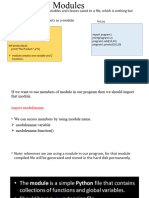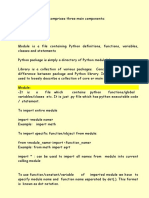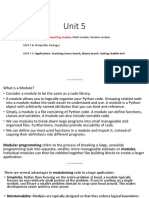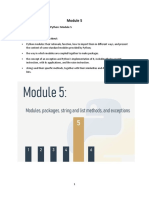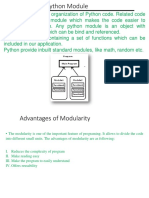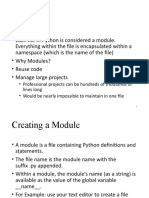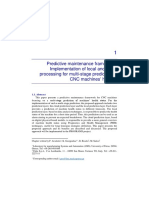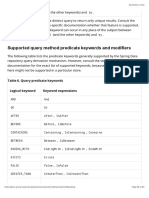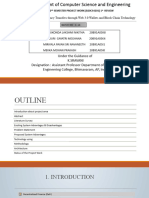0% found this document useful (0 votes)
18 views17 pagesModule
The document provides an overview of Python modules, explaining their structure, how to import them, and access their attributes. It covers various import methods, module namespaces, reloading modules, and built-in functions like globals() and locals(). Additionally, it details specific modules such as math, datetime, and random, along with their functions and usage examples.
Uploaded by
classgattapugariCopyright
© © All Rights Reserved
We take content rights seriously. If you suspect this is your content, claim it here.
Available Formats
Download as PPTX, PDF, TXT or read online on Scribd
0% found this document useful (0 votes)
18 views17 pagesModule
The document provides an overview of Python modules, explaining their structure, how to import them, and access their attributes. It covers various import methods, module namespaces, reloading modules, and built-in functions like globals() and locals(). Additionally, it details specific modules such as math, datetime, and random, along with their functions and usage examples.
Uploaded by
classgattapugariCopyright
© © All Rights Reserved
We take content rights seriously. If you suspect this is your content, claim it here.
Available Formats
Download as PPTX, PDF, TXT or read online on Scribd
/ 17


























